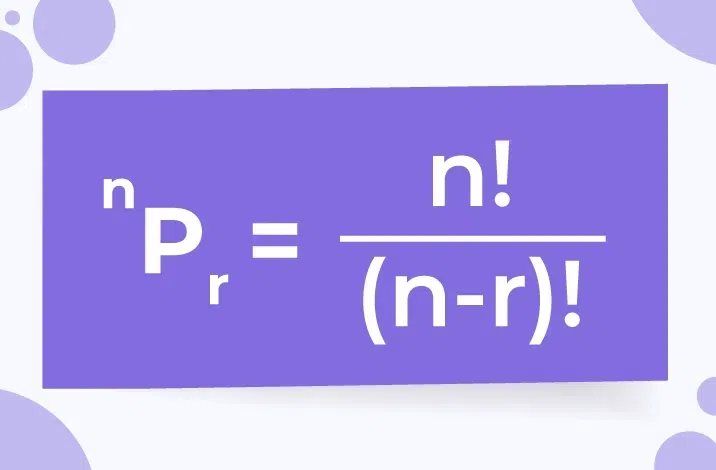
|
Answer: Yes, Order Matters in Permutations.What is Permutation?In mathematics, a permutation is an arrangement of a set of objects in a particular order. Each permutation is a unique sequence where the order of elements matters. For example, given a set {A, B, C}, the permutations ABC, ACB, BAC, BCA, CAB, and CBA are all distinct because they arrange the elements in different orders. Definition
Permutation FormulaThe formula of permutation calculates the number of ways to arrange r items selected from a set of n items, where the order of the items matters. It is represented as:
 Does Order Matter in PermutationsYes, in permutations, the order does matter. Permutations are arrangements of elements where the order of selection is important. For example, if you have a set of elements {1, 2, 3}, the permutations include arrangements like 123, 132, 231, 213, 312 and 321. Each permutation is distinct because the order of the elements is different in each case. The number of permutations of a set of n distinct objects is given by n factorial (n!), which grows exponentially as n increases. Taking all the possible arrangements where order matters, this factorial shows the total number of ways those things can be arranged. However, in the case of combinations, the order does not matter. Combinations are used to select a subset of items randomly chosen from a bigger collection, regardless of the order in which they are selected. the same elements. For example, the combinations of {A, B, C} include ABC and BAC, CAB, etc., treating these selections as the same group because they contain the same elements. Related ExamplesExample 1: Find the number of permutations of 3 distinct letters taken 2 at a time. Solution:
Example 2: How many ways can 4 people (A, B, C, D) be arranged in a line? Solution:
Example 3: In how many ways can the letters of the word “BOOK” be arranged? Solution:
Example 4: How many permutations can be made from the letters of the word “APPLE”? Solution:
Example 5: In how many ways can 3 books (Book A, Book B, Book C) be arranged on a shelf? Solution:
Example 6: A team of 5 students (Alex, Bob, Carol, Dave, Eve) is to be arranged in a row for a photo. In how many ways can they be arranged? Solution:
Example 7: How many different license plates can be made using 3 letters followed by 3 digits (assuming each letter or digit can be used more than once)? Solution:
Example 8: How many different ways can 4 different awards (Gold, Silver, Bronze, and Iron) be distributed among 4 competitors (Alice, Bob, Carol, and Dave)? Solution:
Practice ProblemsProblem 1: How many permutations can be made from the letters of the word “BANANA”? Problem 2: In how many ways can 4 books (Book X, Book Y, Book Z, Book W) be arranged on a shelf? Problem 3: A group of 6 people (Alice, Bob, Carol, David, Eve, Frank) are to stand in a line for a photograph. In how many different ways can they arrange themselves? Problem 4: How many different 4-digit numbers can be formed using the digits 1, 2, 3, and 4, without repetition of digits? Problem 5: In a spelling competition, there are 8 contestants. In how many ways can the first, second, and third places be awarded prizes if ties are not allowed? Problem 6: A team of 7 basketball players are to be arranged in a line for a team photo. In how many ways can they arrange themselves if the point guard and center refuse to stand next to each other? Problem 7: How many different ways can the letters of the word “COMPUTER” be arranged? Problem 8: A committee of 5 members is to be formed from 10 people. In how many ways can this be done if the order of selection does not matter? Problem 9: How many different arrangements can be made of the digits 2, 3, 4, 5, 6, 7, 8 if no digit is repeated? Problem 10: In how many ways can 5 different books (Book A, Book B, Book C, Book D, Book E) be arranged on a shelf if Book A must always be to the left of Book B? Read More, FAQsWhat is the General Rule for Permutation?
What are the Limitations of Permutations?
How is a Permutation Different from a Combination?
A group of 5 friends wants to take a picture. In how many different ways can they arrange themselves in a row?
How can you determine if order matters in a problem?
|
Reffered: https://www.geeksforgeeks.org
| Mathematics |
| Related |
|---|
| |
| |
| |
| |
| |
Type: | Geek |
Category: | Coding |
Sub Category: | Tutorial |
Uploaded by: | Admin |
Views: | 21 |